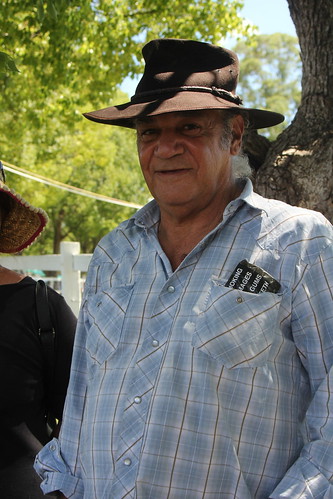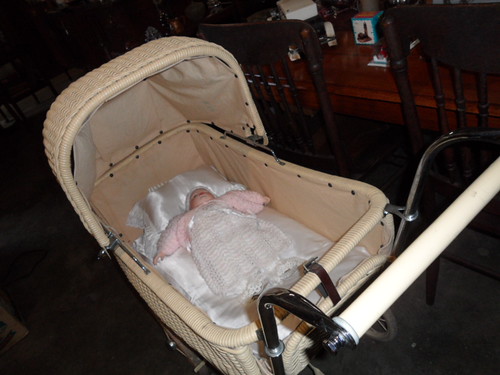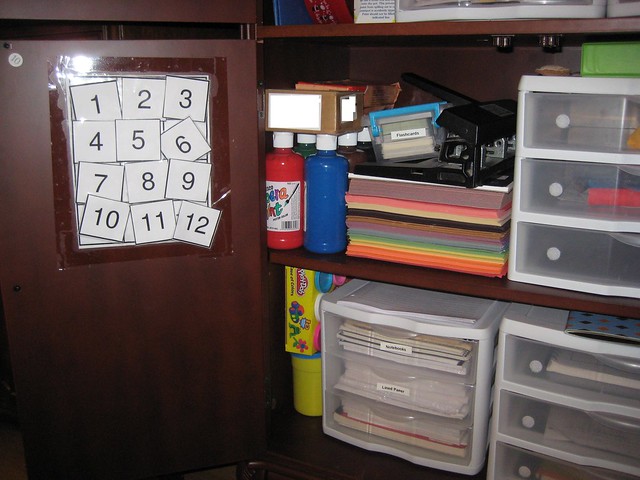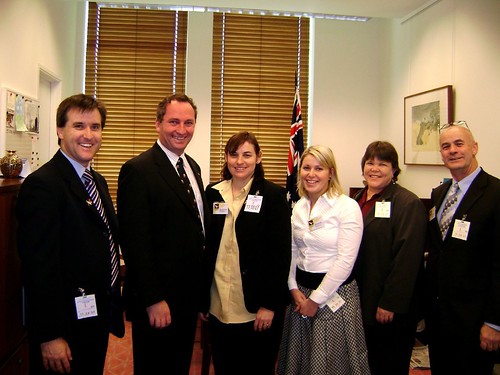“And were it not for Allāh’s
repelling some men with others, the earth would certainly be in a state
of disorder; but Allāh is Gracious to the creatures”[1]
The Ummah of the best of the Messengers, the imam of the messengers,
most beloved of the Messengers, Muhammad (sallAllāhu ‘alayhi wasallam)
is one which is raised in distinction by Allāh as the greatest Ummah.
Such an honour is granted upon this Ummah for many reasons but one is
certainly the honour, courage and valour shown by its adherents.
Arguably, there is not a group of any significance whom you can think of
from history but that you will find that the Muslims had challenged
them or had been challenged by them and that the Muslims were
victorious. More than a millennium ago fleets of Viking raiders were
striking fear into the hearts of coast and river-dwellers throughout
Europe. Many such foes have come and gone be it the Romans, the
Persians, the Crusaders, the Mongols and so on. So too you will find
that the Muslims also encountered the much feared Vikings.
These two worlds were of course very different. One was a red-headed
pagan tribe that wore horned helmets and pillaged for a living; the
other a cosmopolitan, sophisticated civilisation that spanned continents
and, at whose table, the rest of Europe picked up the crumbs. The
Vikings were at the height of their power and influence between the late
8th and early 11th centuries known as the ‘Viking Age’. During this
period, Islām was entering its golden age, with a renaissance of
unprecedented intellectual and economic heights that would eventually
reach from China to what is now modern-day Spain.
Who were the Vikings?
The Vikings’ homeland was Scandinavia: modern-day Norway, Sweden and
Denmark. From here they travelled great distances, mainly by sea and
river – as far as North America to the west, Russia to the east, Lapland
to the north and North Africa and Iraq to the south. They were skilled
craftsmen and boat-builders, adventurous explorers and wide-ranging
traders.
The Clash
When most people think of the history of Spain, rarely are
discussions of the Vikings evoked. Yet when the two cultures first met,
it was in battle in Al-Andalus, modern-day Spain.
What is interesting is that whilst the Muslims in the Middle East
referred to the Vikings as ‘Rüs’, which was the term they were also know
by to the Byzantine Romans, the Muslims in Europe in al-Andalus
referred to them as ‘Mâjus’, ‘Fire Worshippers’ – a pejorative reference
to their paganism and a label which Muslims also used for the fire
worshipping Persians.
Fresh from their conquests round that basin of the Mediterranean, the
Vikings sought to measure their strength against the military might of
the Muslims. In 844 (230AH), a letter arrived in the capital, Qurtuba
(Cordoba) from the governor of Lisbon, Burtùqaāl (Portugal, which finds
its root in the Arabic word for orange), Wahballah ibn Hazm to the emir
of the Umayyad Emirate of al-Andalus, ‘Abd ar-Rahman ibn al-Hakam II,
warning him that approximately 70-100 Viking ships had been sighted
around the coast of his province. In other accounts, the ships were seen
as so numerous that they were described as filling the sea with dark
red birds, whilst filling the hearts of men with fear and trembling.
After landing in Lisbon with their iron horned helmets, chain mail,
wooden shields, spears, bows, axes and swords, they caused havoc
terrorising the inhabitants. They then did the same in Cadiz and Sidona,
before striking the large city of Ishbiliyya (Seville) which they
besieged and took by storm and laid fire to the largest Mosque there.
They remained there for 7 days and, in other accounts, for 14 days.
It is said that the Vikings were uncommonly brave and therefore ‘Abd
ar-Rahman wanted to ensure all the reinforcements had arrived before
mounting a challenge. When all the soldiers from the borders had arrived
and gathered under one banner, the Muslims hastened and took their
position under the cover of night at a high point on the south east of
Seville at a place called Moron to lie in wait for the enemy. They used a
large tower of a Church in the town as a watch tower to observe the
movement of the Vikings. Just after the time of Fajr (the
prayer at dawn) had passed, the guard on the watch tower sent a signal
that the Mâjus Vikings were on the move numbering around 16,000. The
Muslims let them pass and then set upon them in ambush cutting them off
from the city of Seville where they were encamped and set about cutting
them down. This attack was carried out with great success.
Having decimated the Vikings in this attack, the Muslims advanced on
to Seville – when the Mâjus army there saw the advancement of the
Muslims and heard about the disaster that had befallen their detachment
army in Moron at the hands of the Muslims, they began to retreat back to
their ships and started sailing away. The Muslims pursued them and
captured and burned four of their ships having already unloaded them of
all their cargo.[2]
The Muslim historian, Ibn Adhari narrates the event of the victory as follows:
“God gave them to our swords and destroyed them,
numerous as they were. Their general was killed. When they had been
annihilated, the Government made this event known throughout the
provinces to celebrate this event”.[3]
Terms following the battle and the intrigue of al-Gazzál
It was characteristic of the Vikings that trading often followed the
raiding and the sword. After the battle, the envoys of the king of the
Vikings came to ‘Abd ar-Rahman to ask for peace. ‘Abd ar-Rahman decided
to reply accepting this request and an exchange of envoys took
place. The man who was commissioned with this task from the Muslims
was Yahya ibn-Hakam, better known as al-Ghazál (not to be mistaken for
the Muslim sage, al-Ghazzali) who was the leading diplomat in al-Andalus
and who possessed keenness of mind, quickness of wit, skill in
repartee, courage and perseverance, and knew his way in and out of every
door. He, together with a companion of his made the perilous voyage to
the kingdom of the Vikings in the Atlantic North.[4]
Two days after arriving to a great island in the ocean, the king of
the Vikings summoned al-Ghazál to his presence. Al-Ghazál stipulated
that he would not be made to kneel to him and that he and his companions
would not be required to do anything contrary to their faith. The King
agreed to this, however, when they went to him, he sat before them in
magnificent guise, and ordered an entrance, through which he must be
approached, to be made so low that one could only enter kneeling.
Al-Ghazál being the wise man that he was, sat on the ground, stretched
forth his two legs, and dragged himself through on his rear. And when he
had passed through the doorway, he stood erect.
The king had prepared
himself for him, with many arms and great pomp. But al-Ghazál was not
overawed by this, nor did it frighten him. He stood erect before him,
and said: “Assalam Alaikum, Peace be with you, O king, and with those whom your assembly hall contains, and respectful greetings to you!“.
Al-Ghazál sensed that the King wished for him to be impressed by the
splendour of his palace and power which he perceived he held and as
such, al- Ghazál took this opportunity in also reminding the King what
his true reality by reciting a verse from the Glorious Qur’an carefully,
selected from Surah al-Qasas, the chapter which recounts the story of
Musa (ʿalayhi al-Salām) and Pharoah:
“And call not with Allāh any other god; there is no
god but He, everything is perishable but He; His is the judgment, and to
Him you shall be brought back. [5]
The King then said: “this is one of the wise men of his nation, we
wished to humiliate him but he outwitted me by showing me the soles of
his feet first sitting on the ground as he entered (rather than bowing
to me)”. Al- Ghazál read out ‘Abd ar-Rahman’s letter to the King and
presented the gifts which he had given him which pleased him much. From
the various chronicles where this story is found, it states that the
Queen took a real interest in Al- Ghazál and that he spent some time
with her speaking to her about Islām and the Muslim world. Pausing here
for a moment, it should be noted that earlier this year in March 2015, a
ring adorned with a violet-coloured piece of glass was found at an
excavation site at a Viking trading centre in Sweden. An inscription on
the glass has been found to read either “for Allāh” or “to Allāh”
in an ancient Arabic Kufic script. The ring was found in a grave north
of Borg on the Björkö Island. Clothes and jewellery around the
decomposed skeleton showed it to be a female burial dating back to 850
AD, which interestingly places it in the same period as al- Ghazál and
the Viking queen.[6] Either way, the ring constitutes evidence for direct interactions between the Vikings and the Islamic world.
Al- Ghazál returned to al-Andalus more than 20 months after his
departure. Although the Vikings would return once again to al-Andalus in
or around 859-860 during the reign of Emir Muhammad, this time they
were dealt with far more swiftly and set to flight immediately as the
previous attack some 29 years earlier had caused ‘Abd ar-Rahman to
militarise more aggressively which included him building an arsenal in
Seville, ordering many ships to be built and developing the navy who
guarded the frontiers of the country and thus, fulfilling the task which
the Messenger of Allāh (sallAllāhu ‘alayhi wasallam) described as
follows:
“Guarding the frontier for a day in the path of Allāh is better than fasting and prayer of a month.” [7]
Further Encounter
The most important eye witness account of the Vikings that the world has to learn from today is from the works of a Muslim faqih,
an expert in Islamic jurisprudence and faith, in the court of the
Abbasid Caliph, Al-Muqtadir, Ahmad ibn Fadlanas – it was his account
that inspired author Michael Crichton’s 1976 novel ‘Eaters’ and the film
called the ‘13th Warrior’ starring Antonio Banderas.
Ibn Fadlan was sent from Baghdad in 921 to serve as the secretary to
an ambassador from the Abbasid Caliph al-Muqtadir to the iltäbär
(vassal-king under the Khazars) of the Volga Bulgaria, Almış. Primarily,
the purpose of their mission was to explain Islamic law to the recently
converted Bulgar peoples living on the eastern bank of the Volga River
in what is now Russia
Whilst on his mission, he came across and encountered the Vikings
whom he also spent some time with and whom he described as follows:
“I have seen the Rus as they came on their merchant
journeys and encamped by the Vulgar River. I have never seen more
perfect physical specimens, tall as date palms, blond and ruddy…Each man
has an axe, a sword, and a knife, and keeps each by him at all times”.
He further commented on their hygiene customs when he recounted that: “They are the filthiest of God’s creatures,” and although he acknowledged that they washed their hands, faces and heads every day, he was appalled that they did so “in the dirtiest and filthiest fashion possible”
in a communal basin of water, an ancient Germanic custom that caused
understandable revulsion in a Muslim who typically performed ablutions
only in poured or running water.[8]
This was a period which saw the Vikings making regular journeys all
the way to Baghdad for trading. Hundreds of Viking Age graves and buried
hoards, it turns out, contain caches of still-gleaming Arab dirhams,
“the coin that helped fuel the Viking Age,” according to Thomas S.
Noonan of the University of Minnesota. Noonan is one of the world’s
leading experts on medieval Scandinavian ties with the Muslim world, and
a specialist in Viking numismatic history.
Points to note:
When researchers consider the history of the Vikings today, they are
heavily reliant on Muslim chroniclers because, unlike Europeans, the
Arab Muslims reports are considered to be far more objective and, in the
eyes of many scholars today, more credible. Most experts acknowledge
that the Vikings were, in general, victims of a medieval “bad press” by
many European nations because of the defeats the Vikings exacted on
them.
It is also easy to forget in today’s times when Muslims have become
comparatively weak, that it was not always like this. It shows us that
there was once a time when there was a flourishing field of Islamic
geography, a response to the thirst for knowledge about the vast Islamic
world and the regions beyond it. We also learn how Muslims conducted
themselves, being proud of their faith and not being overawed by a
dominant surrounding as we saw with the example of Al-Ghazál.
It is important for us to reconnect with our history and heritage to
learn about our rich tradition of innovation, culture, honour and
courage, planning and foresight and read about when the Ummah was great
so that the Ummah may become great once more inshaAllāh.
Source:
www.islam21c.com
Notes:
For references on the battle, please see: Al-Kutia, translated by David James, “Early Islamic Spain”; And,
Ibn-Adhari, translated in Stefansson, Jon, “The Vikings in Spain.
From Arabic (Moorish) and Spanish Sources”. In Saga-Book of the Viking
Club: Vol. VI Proceedings. University of London King’s College, 1909,
pp. 35-36.
For references on al-Ghazál, please see: “The Poet and the Spae-Wife,
An Attempt to Reconstruct Al-Ghazal’s Embassy to the Vikings”, By W.E.D
Allen.
[1] Al-Qur’ān 2:254
[2] Al-Kutia, translated by David James, “Early Islamic Spain”.
[3] Ibn-Adhari, translated in Stefansson, Jon, “The Vikings in Spain.
From Arabic (Moorish) and Spanish Sources”. In Saga-Book of the Viking
Club: Vol. VI Proceedings. University of London King’s College, 1909,
pp. 35-36.
[4] “The Poet and the Spae-Wife, An Attempt to Reconstruct Al-Ghazal’s Embassy to the Vikings”, By W.E.D Allen.
[5] Al-Qur’ān, 28:88








